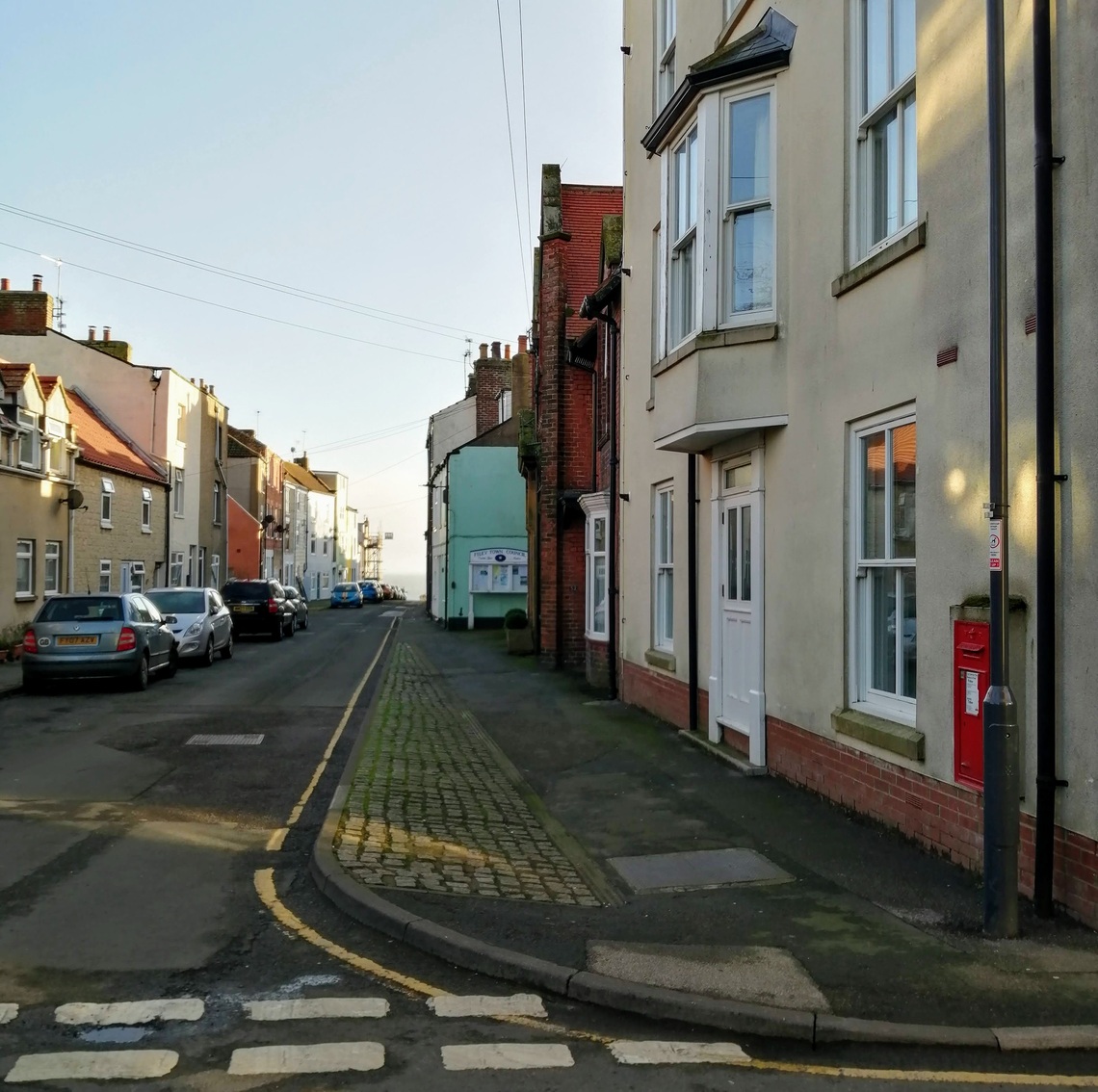Queen Street once comprised almost the whole of the village of Filey. Excavations carried out in 1976 show there has been known occupation in this area since the 1300s.
For centuries this street would know the early morning greetings of the fishermen making their way to their boats, and of the cottagers setting out for their strips of land in the still open fields north and south of the village. Also in this street, as the village grew in the 19th century, lived the craftsmen and tradesmen. Here could be found a ropemaker, a twine spinner, a straw-hat maker, a master saddler, a cordwainer and a brickmaker, together with fishermen, fish curers, fishmongers, doctors, farmers and dressmakers.
Between Queen Street and Church Ravine were many groups of cottages. We know their names but not always their exact location. Parkinson’s Yard, Suggitt’s Yard, Mallory’s Yard, Victoria Passage and Trafalgar Square are just some.
The street has had several names. In the late 18th century, it was called Town Street, then from Cliff Top to Reynolds Street it was Queen Street and King Street for the rest. Finally, towards the close of the 19th century, the whole became Queen Street.
Continue down Queen Street past its junction with Reynolds Street and you reach an area that gives something more of the atmosphere of “old” Filey.
The buildings are, in the main, of late 18th and 19th-century construction. Although the cottages, grouped in yards, are now gone, several entries remain. White’s Yard entry was between 61 and 63, Richardson’s Yard between 75 and 77 and Stockdale’s Yard between 81 & 83.
In Queen Street you can spot several examples of a feature of Filey - glazed front door panels depicting cobles or drifters (small fishing vessels). These are the work of a local glazier but over the years are decreasing in number.
Notice also the Victorian post box in the wall at the corner with Reynolds Street.
